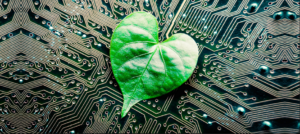The term is an abbreviation for “ecological design,” which refers to the process of minimizing the environmental impacts of a product, or service. In such a design process, the entire life cycle of a product is considered, including extraction of raw materials, production, distribution, use and even recycling or disposal. The process adds ecology to aesthetics and functionality in product design.

The term can apply to a broad, really unlimited, range of products, from toothbrushes to circuit boards to houses. While there is an Ecodesign European Directive, it is limited to energy-related products
Because it requires dealing with the full cycle of products, including reuse and recycling, ecodesign is part of a circular economy.
Some further ideas to explore on Ecodesign:
Pick a product that you use all the time and see if you can determine whether there are any versions of the product that have been subjected to an ecodesign.
If so, how is the product different after its ecodesign than before?
How can you tell which products have been subjected to an ecodesign?
Sources:
“About Ecodesign,” Ecodesign Circle bit.ly/2slSmb1
“Circular Economy” in the iePEDIA section of irish environment magazine (1 August 2014). bit.ly/2rGUIkm
Directive 2009/125/EC of the European Parliament and of the Council of 21 October 2009 establishing a framework for the setting of ecodesign requirements for energy-related products https://bit.ly/34ykp5v
European Commission, Ecodesign bit.ly/2q32WTA
European council for an energy efficient economy, Ecodesign and Labelling. www.eceee.org/ecodesign/


No comments yet, add your own below